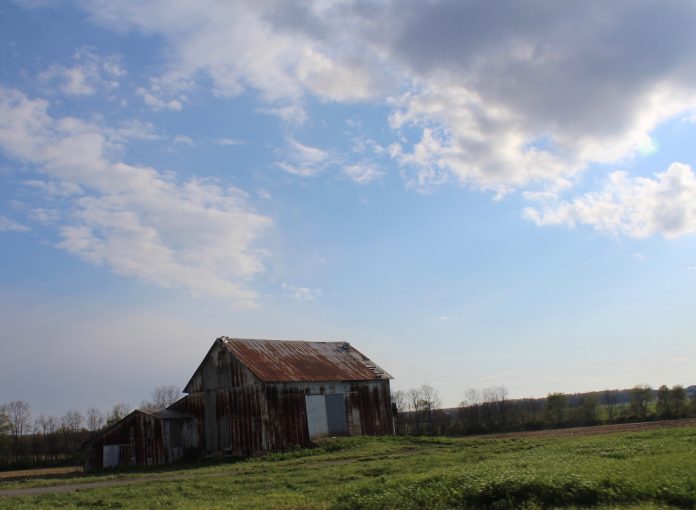The Ohio Department of Agriculture hit pause on the mainstay of its farmland preservation program late last year. It announced no new applications would be accepted into the local agricultural easement purchase program in 2021.
This news came as a surprise to local program sponsors and advisory board members when it was announced last November during an Ohio Farmland Preservation Advisory Board meeting. There were dozens of easements pending, all of which were funded by future bond sales, Ohio Department of Agriculture said, at the time.
The shortfall came from a “lack of leadership” in previous administrations, according to agriculture Director Dorothy Pelanda, who spoke to Farm and Dairy in a recent interview. Money was being promised to local sponsors that wasn’t there. Ohio’s farmland preservation program needs an extra $7 million this year to help it right the ship after several years of fiscal mismanagement, Pelanda said.
Whether the program will get this money remains to be seen. Gov. Mike DeWine’s proposed operating budget included an additional $7 million for the Office of Farmland Preservation, a program that is usually funded through bond sales.
The Ohio House struck the additional moneys from the state’s proposed operating budget, but there’s still a chance for the Senate to add it back in.
“This funding is critical to the operations of the farmland preservation division,” Pelanda said, when she testified before the Senate Local Government and Elections committee April 27.
Shortfall
The state’s farmland preservation program is funded by Clean Ohio bond sales and receives $6.25 million annually. Pelanda said funds in excess of that were being committed to local sponsors.
When she was appointed head up the department in early 2019, she also brought on a new executive director of the Office of Farmland Preservation, Sarah Huffman.
Huffman, an attorney familiar with title work, began to work through the backlog of easements and unravel the program’s financial situation, Pelanda said.
Dave Daniels served as director of agriculture in Ohio before Pelanda. He was fired by Gov. John Kasich in October 2018, for unknown reasons, though it was believed to stem from differences in opinion about Kasich’s actions on water quality in northwestern Ohio.
Under his direction, the office of farmland preservation “localized” the easement purchase program. Daniel’s director of farmland preservation, Denise Franz King, said in a 2013 interview with Brownfield Ag News that they would be putting “more responsibility and more of the funding at the local level.”
How such a disconnect grew between what was happening at the local and state levels is unclear.
The $7 million in additional funds would basically allow the program to catch up with pending easements. Pelanda testified before the Senate’s Local Government and Elections committee that there were more than 110 pending easements waiting to be closed. According to the March Farmland Preservation Advisory Board meeting, some of those easements are leftover from as far back as the 2015 and 2016 application year.
Pelanda did not mention in her senate or house testimony on the department’s budget needs why an extra $7 million was needed for the farmland preservation program, other than to say it was critical.
Impact
The department closed a record number of easements in 2020, closing 91 easements and preserving more than 12,000 acres. That was more than the program closed from 2015 to 2017 combined, and double the number closed in 2018 and 2019.
Demand for the program is high. Steven Berk, director of public policy with Western Reserve Conservancy, said most local sponsors for the program have a waiting list to apply.
There’s a 40-acre minimum to apply through the easement purchase program. Farms are scored based on a number of factors, including development pressure, soil type, proximity to other farmland and use of best management practices, and given different priority to enter the program.
A farmer can get paid up to $2,000 an acre, capped at $500,000 total, for an agricultural easement on their land. That means the land can only be used for agricultural use, among other conditions, but the farmer can use the payment for anything they want, Berk said.
“On any given year, we have at least a dozen interested applicants,” said Jonathan Ferbrache, resource specialist with Fairfield Soil and Water Conservation District. “We may be able to fund one or two.”
He said they’ve probably lost just as many applicants because funding wasn’t available for them when they needed it.
“A choice needed to be made or they got tired,” he said.
Fairfield County, through its county commissioners, the local easement sponsor for the state program, has been involved in the state’s farmland preservation program since the beginning in 2002. They just closed their 30th easement through the state program, Ferbrache said, although there is other farmland protected through local land trusts and federal programs.
“I’m bringing in smaller farms with less money compared to those first couple years,” he said. “But we’re competing at a much larger level. That $6.25 million is getting spread thinner as they try to allocate it equally around the state.”
(Reporter Rachel Wagoner can be contacted at 800-837-3419 or rachel@farmanddairy.com.)
Related content:
Ohio Farmland Preservation overspent, not taking LAEPP applications in 2021










